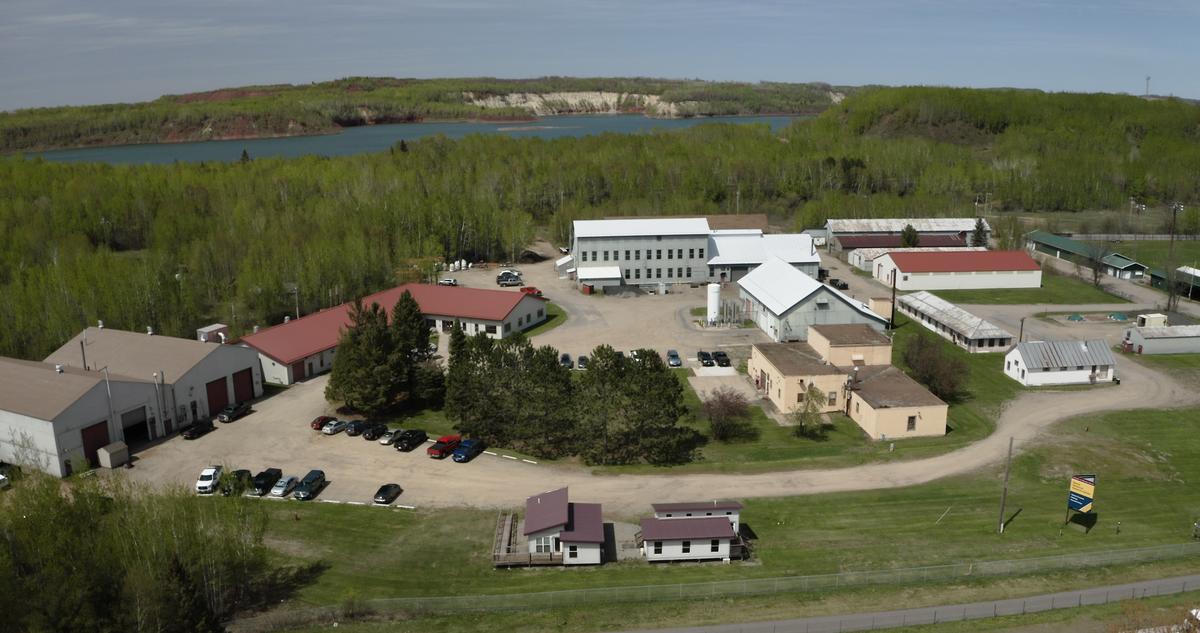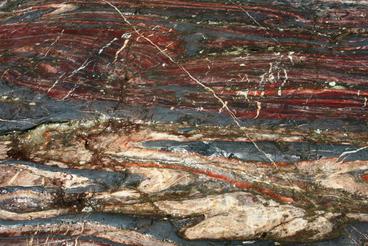This facility is gearing up for tomorrow’s Iron Range while meeting current industry needs.
Once a steel company’s train repair station and research facility, NRRI’s Coleraine Labs are a maze of buildings and industrial equipment. But upgrades to infrastructure are continually underway and modern equipment keeps coming in the door.
So while the original “Davis Tubes” from the 1940s still churn to show researchers the magnetic iron content of a rock sample, the focus is on the future. New equipment is being designed to test ores for higher value uses. Hydrometallurgy capabilities will extract a variety of metals from Minnesota’s ore resources.
Integrating research from NRRI Duluth geologists on the basics of Minnesota’s complex mineralization, NRRI’s team in Coleraine are able to keep building.
“This lab was set up for improving taconite pellets but we want to go beyond that,” explained NRRI Coleraine Labs Director Kevin Kangas. “We need to modernize and gear up to do larger scale research tests that are more meaningful to the steelmakers of today and tomorrow. The U.S. steel industry is evolving and so is NRRI, with methods to achieve high purity iron and enhanced uses for iron resources.”
NRRI will continue to help the taconite pellet industry improve efficiencies to make the best use of the magnetic iron they’re mining today. But it’s well known that magnetite is not Minnesota’s ore of the future. Making iron ore pellets from hematite – a non-magnetic ore – is quickly becoming the focus of existing taconite producers and new startup companies. NRRI is poised to do research and provide process design data from crude ores through high value end products like direct reduced iron, pig iron, and nodular reduced iron.
“We’re getting requests from industry clients to do larger scale production runs using a variety of new technologies,” said Kangas. “We can easily work with kilograms, pounds and a few tons, but we need to be able to scale up for production runs that generate many tons of products for material testing and customer samples.”
One new piece of equipment is called the Fixed Bed Dynamic Direct Reduced Iron (DRI) Simulator - a uniquely designed test method that will closely simulate the DRI technologies on the market today. Shifts to higher efficiency electric arc furnaces have increased demand for a new generation feedstock for steelmaking. While much of Minnesota’s taconite industry still produces pellets for older blast furnaces, new electric arc furnaces require higher grade, metallic iron. This new metallurgical test method will enable Minnesota’s taconite industry to make the transition to modern pellet production and will be commissioned in the summer of 2020.
A new Minerology Lab has been installed in a remodeled building. Now, all the mineral samples that come in from all over the world are tested before any research program begins. It allows for proper safety protocols to be established for the research team while improving the research program.
In 2020, a new climate controlled Pyrometallurgy Lab will be installed to bring all of the “pyro test” methods together in one area under one roof. These high temperature tests are used to test iron oxides and other materials to assess chemical, physical and metallurgical properties.
NRRI’s Chemical Lab is also undergoing a new quality initiative aimed at ensuring all lab procedures and analytical equipment are operated and maintained to match industry standards.
“Providing unbiased, independent research across all of our research groups – from forestry and minerals to water and energy – is the real strength of NRRI,” Kangas added. “Helping industry prepare for the future on a smart and sustainable path is our goal.”

